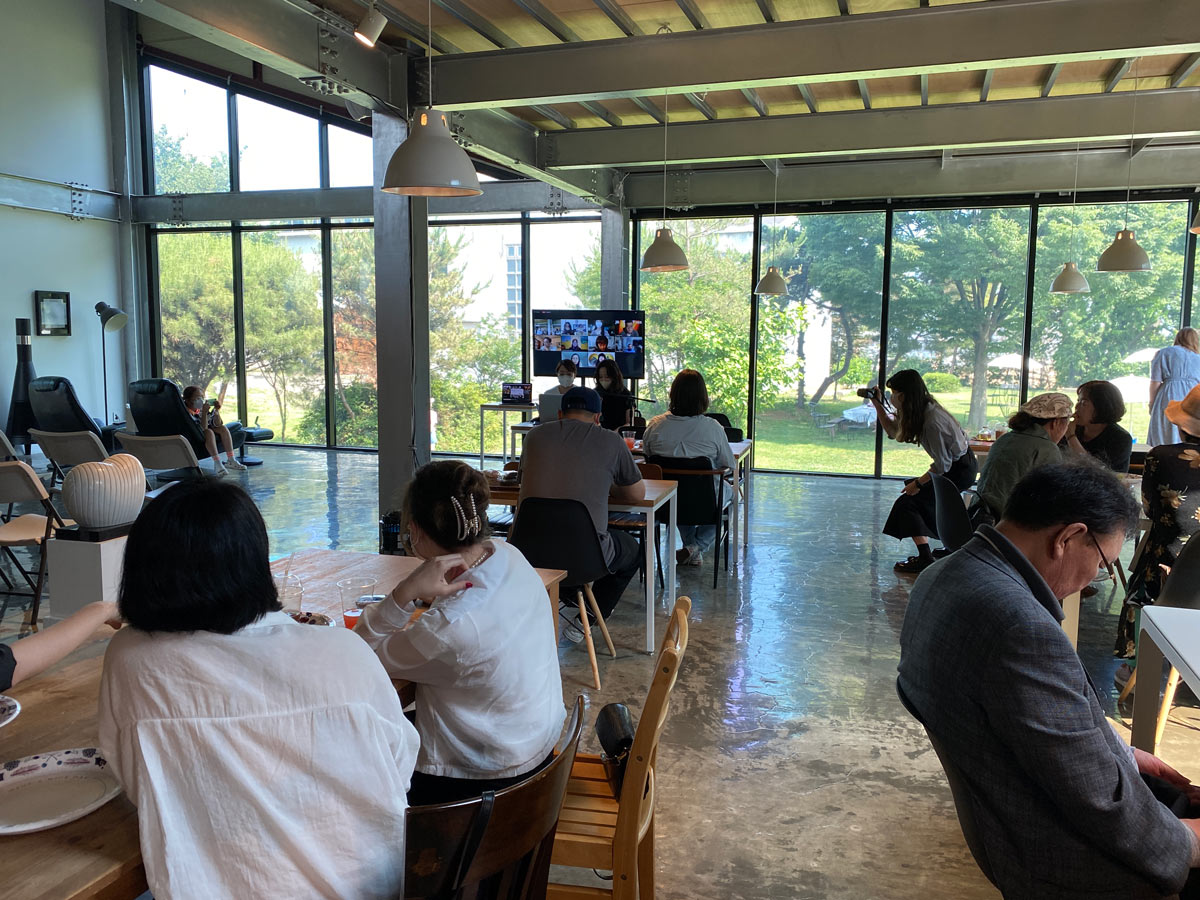
CICA NMAC 2023 Opening Party, Photographed by 최윤영
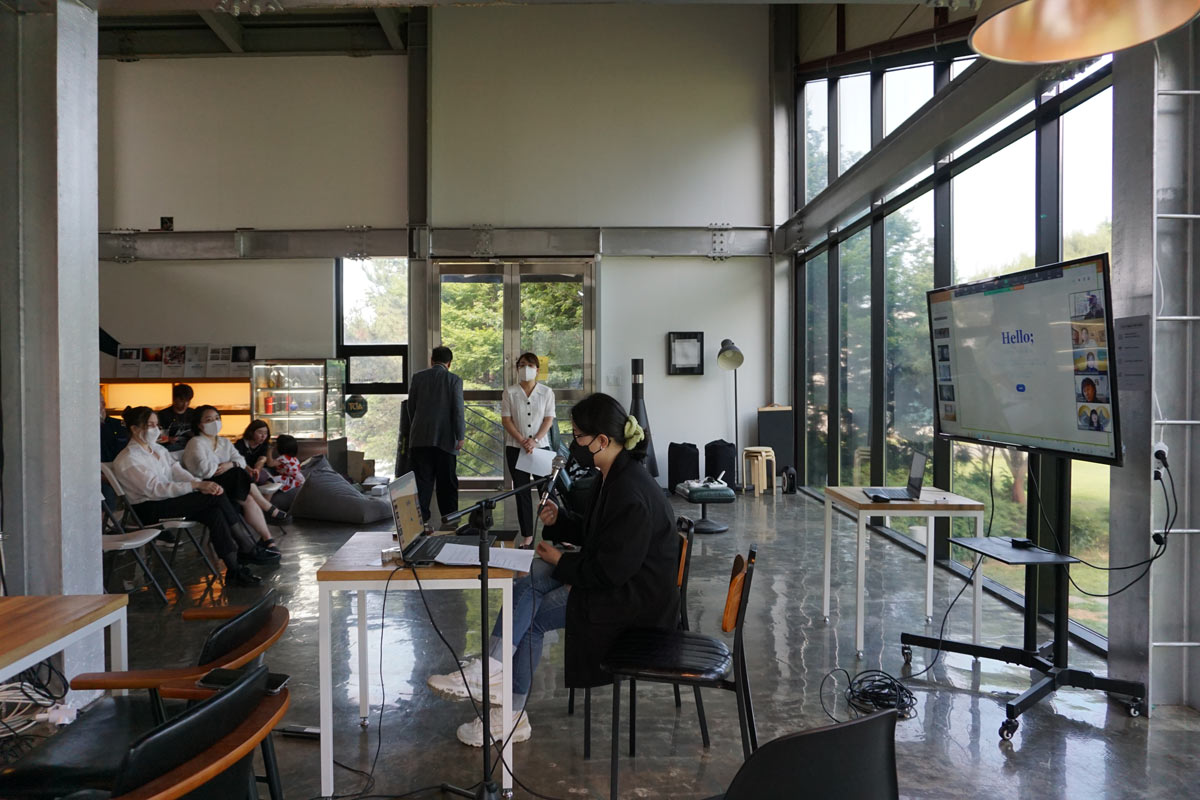
CICA NMAC 2023 Opening Party, Photographed by 김유상 Yoosang Kim
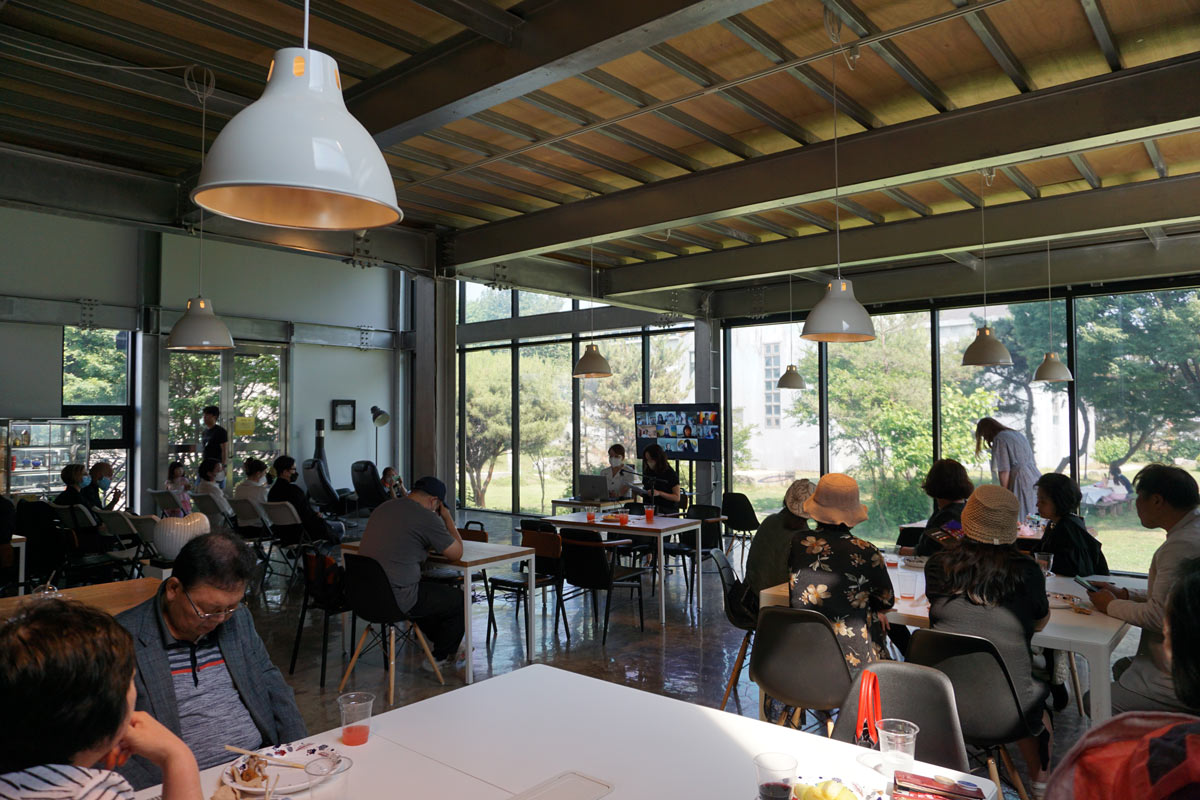
CICA NMAC 2023 Opening Party, Photographed by 김유상 Yoosang Kim
Through the screen, beyond the screen: seeking for the new way of thinking new media art
Yerang Park 박예랑
Recently, galleries and museums displaying artworks around the world have been referred to as “transnational” spaces. The “transnational,” the very term that emerged in the late 20th century, suggests the space of “porous borders” by which contemporary art transgresses the national boundaries(Eriko Tomizawa-kay, et al., 2019: 2). If the older term globalization bears the risk of “incomplete understanding” of the locality because its processes are “largely de-centered from specific national territories," on the other hand, the process of transnationalization expansively cuts across borders while still being “centered in one home nation”(Kearney, 1995: 548).
Contemporary art projects aim to create a shared space of art overcoming spatial limitations. Simultaneously, they reflect on how to preserve and illuminate the regional root of each artwork. The New Media Art Conference(NMAC) held by CICA Museum, from June 11 to 13, 2022, could be read as one of these ambitious approaches to arranging a transnational museum space. To question the outlook of new media art with diverse manners and perspectives, a total of thirteen media artists all over the world were invited to CICA Museum, and twelve of them participated in the conference as presenters. Based on different nations such as South Korea, U.S., Germany, Israel, Romania, Taiwan, and the U.K., presenters shared their experiences and thoughts on the socio-cultural conditions of media technology and art. Some of these presenters and visitors joined the conference site via zoom regarding the ongoing pandemic.
This year, NMAC sessions consisted of two major themes: media technology and humanity. Media politics was also a significant issue in this conference since it problematizes the nodal point between technology and humanity. Presenters such as Stafford H. Smith, Ronnie Karfiol, Bryan Robertson, and Catalin Soreanu & Lavinia German covered this timely issue. Smith focused on the modern condition of production and distribution of socially ritualized photography, and Karfiol investigated how data archiving platforms relate to the political crisis and lives of refugees. Robertson addressed the dialectics of image through the synthesizing process of data analysis operating worldwide, while Soreanu and German explored the aesthetics of photographic framing and representation in the era of digital media.
The latent potency of the development of technology was suggested by presenters like Sinah Jo, Keirah Comstock, and Dho Yee Chung, all of whom are especially researching the practical sphere of art. As an NFT artist and designer, Jo reflected on a new horizon of distributing artworks based on decentralized blockchain technology. Comstock, who is based on the pedagogical discipline, introduced her theory on the utility of technology in the art education process. Chung presented the observations and analysis of platform economy, stressing her background in design practices.
Urging to rethink humanity in the digital era were artists such as Ai-Chun Huang, Cecilia Suhr, Mimi Young-Mi Lee, Seyeon Park, and Jia-Rey Chang. With the series of animation videos, Huang showed her autobiographical traits within the criticism of modern culture; Suhr sought the redemption of the lost humanity through her interactive media artwork bearing the hope for a cure. Moreover, Lee’s work suggested looking back upon the capitalist consumption culture overwhelmed by the flood of images. Park investigated the way for humans to see from the viewpoint of the object through VR technology, and Chang addressed the reality inseparable with the virtual world that shapes actual human bodily senses.
The conference session was wound up on Monday, June 13, with the tour around Yeoncheon where a meeting with Yesmo was held. This meeting took place in the Yeoncheon Arthouse, which previously was a brickyard but now holding an <DMZ Peace Photo Show> exhibition supported by the Gyeonggi Cultural Foundation, discussing how to effectively revitalize this place with the residents’ community named Yesmo. In this talk with Yeoncheon residents, artists from South Korea, Romania, U.S., and Israel shared their opinion regarding the circumstances of each nation. The finale of CICA NMAC 2022 was searching for the future of the new local art space in South Korea.
To sum, twelve different voices from distant regional bases were resonating with the pivotal questions on new media and art in CICA NMAC 2022. How could media technology render and modify our patterns of thoughts, behaviors, and senses? How does this world of developing new media technology differ from the previous one? How could we alter our perspectives on humanity pertinent to these conditions of constant change and transition? With their vividly ongoing experiences, presenters suggested their proper methods of answering these questions. Looking forward to the prospect that this conference may have cast light on, now let's ask ourselves: where should art in the age of digital media move forward to, and how could it be possible across the world?

CICA Garden, Photographed by 김유상 Yoosang Kim

CICA NMAC 2023 Opening Party, Photographed by 김유상 Yoosang Kim
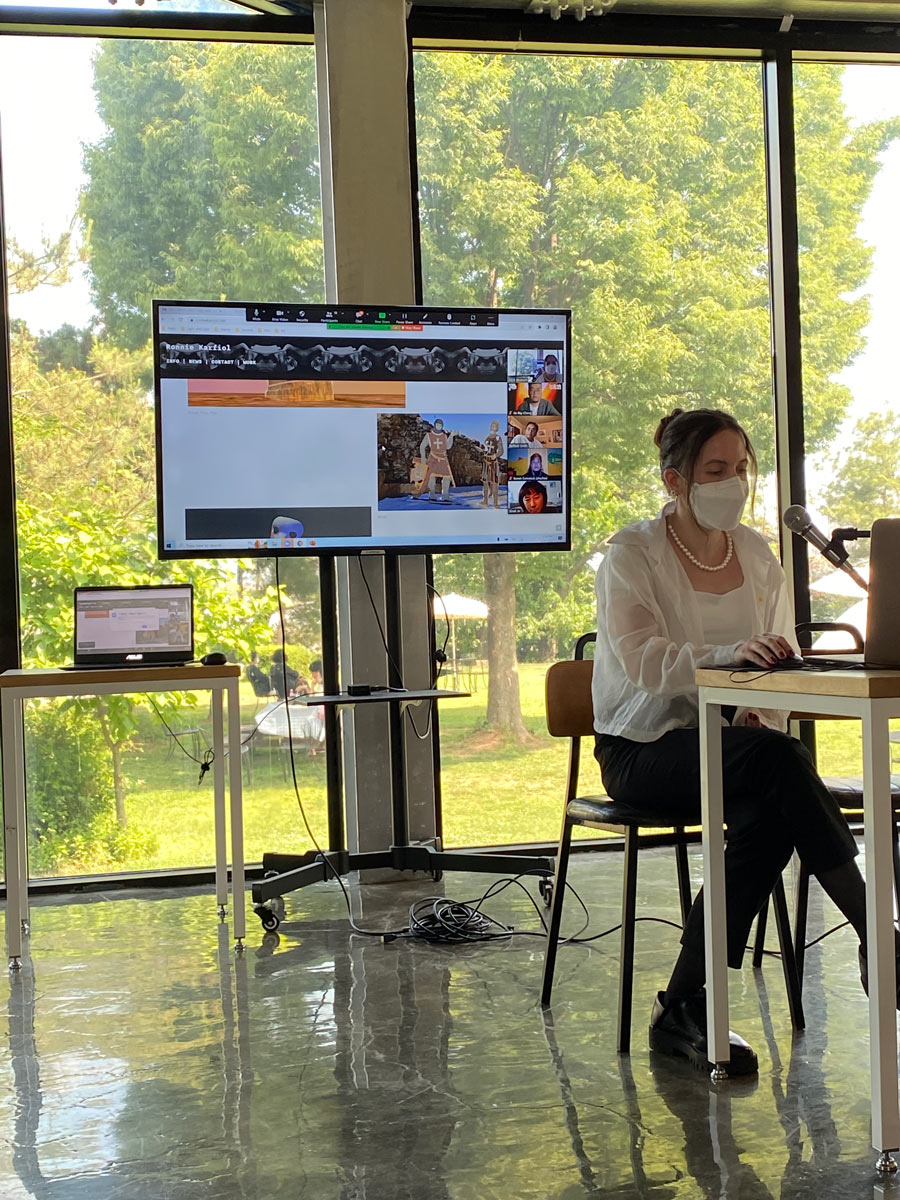
CICA NMAC 2023 Opening Party, Photographed by 최윤영
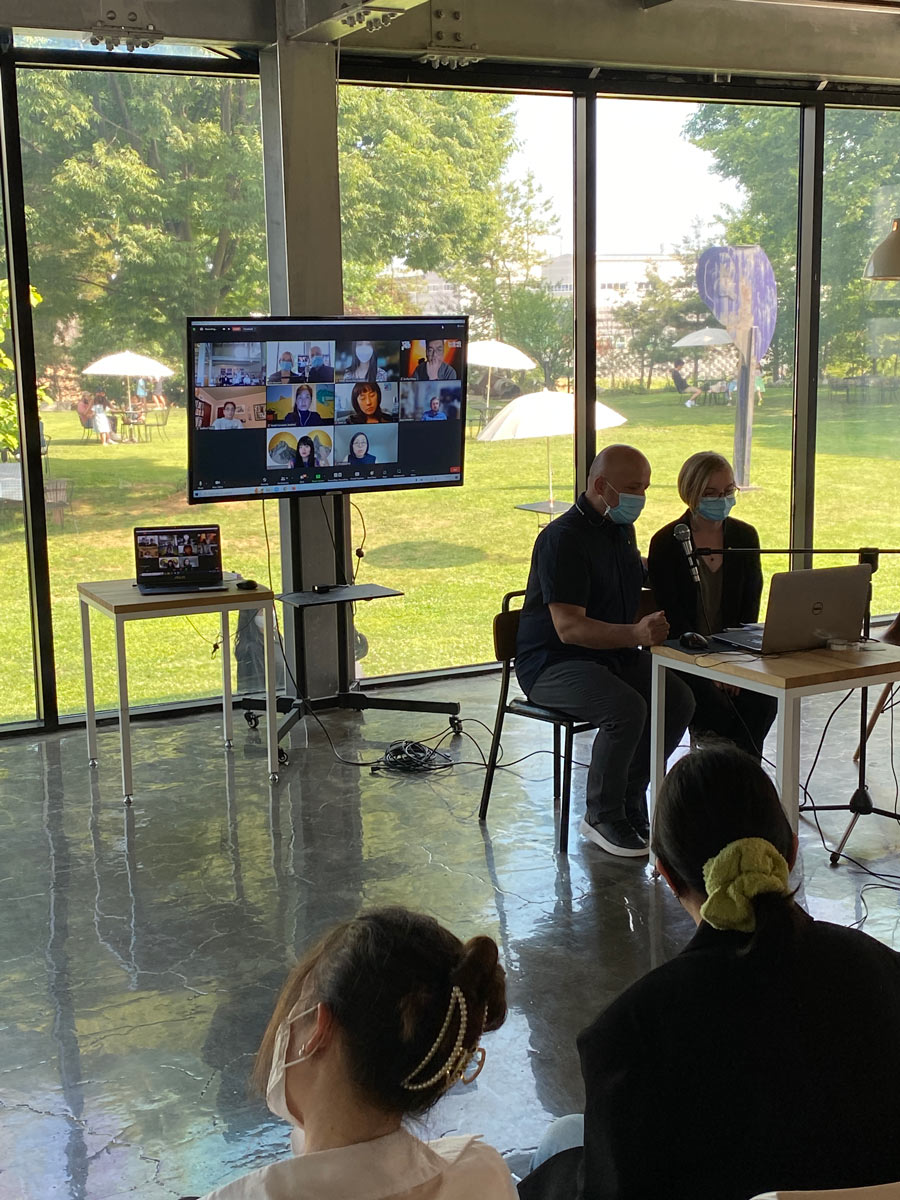
CICA NMAC 2023 Opening Party, Photographed by 최윤영
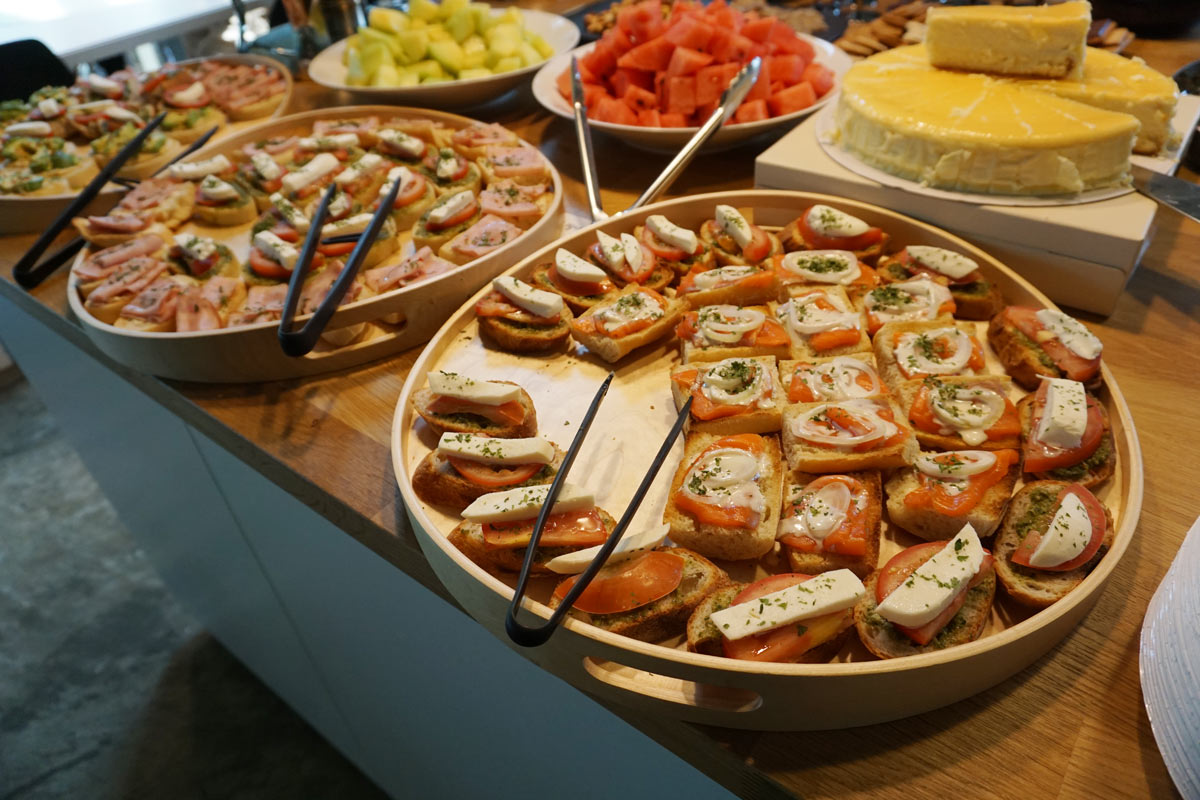
CICA NMAC 2023 Opening Party, Photographed by 김유상 Yoosang Kim
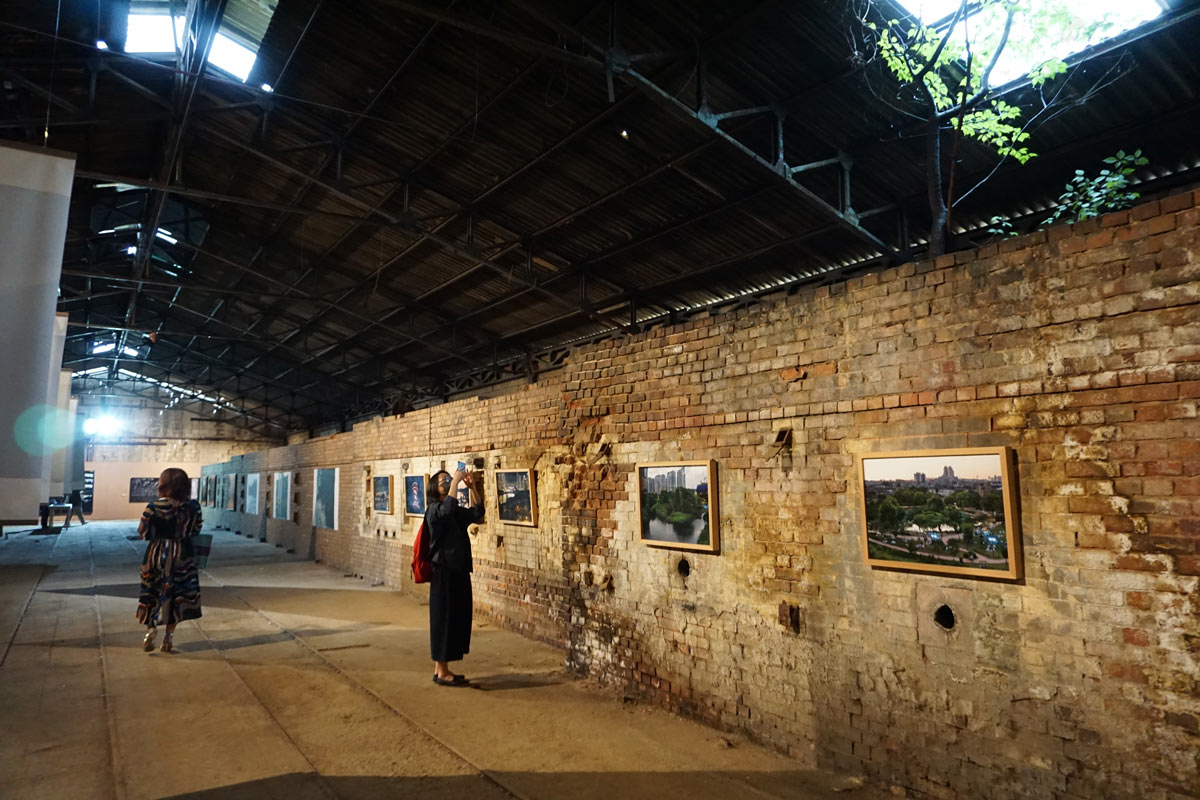
Tour & Workshop at Yeoncheon, Photographed by 김유상 Yoosang Kim
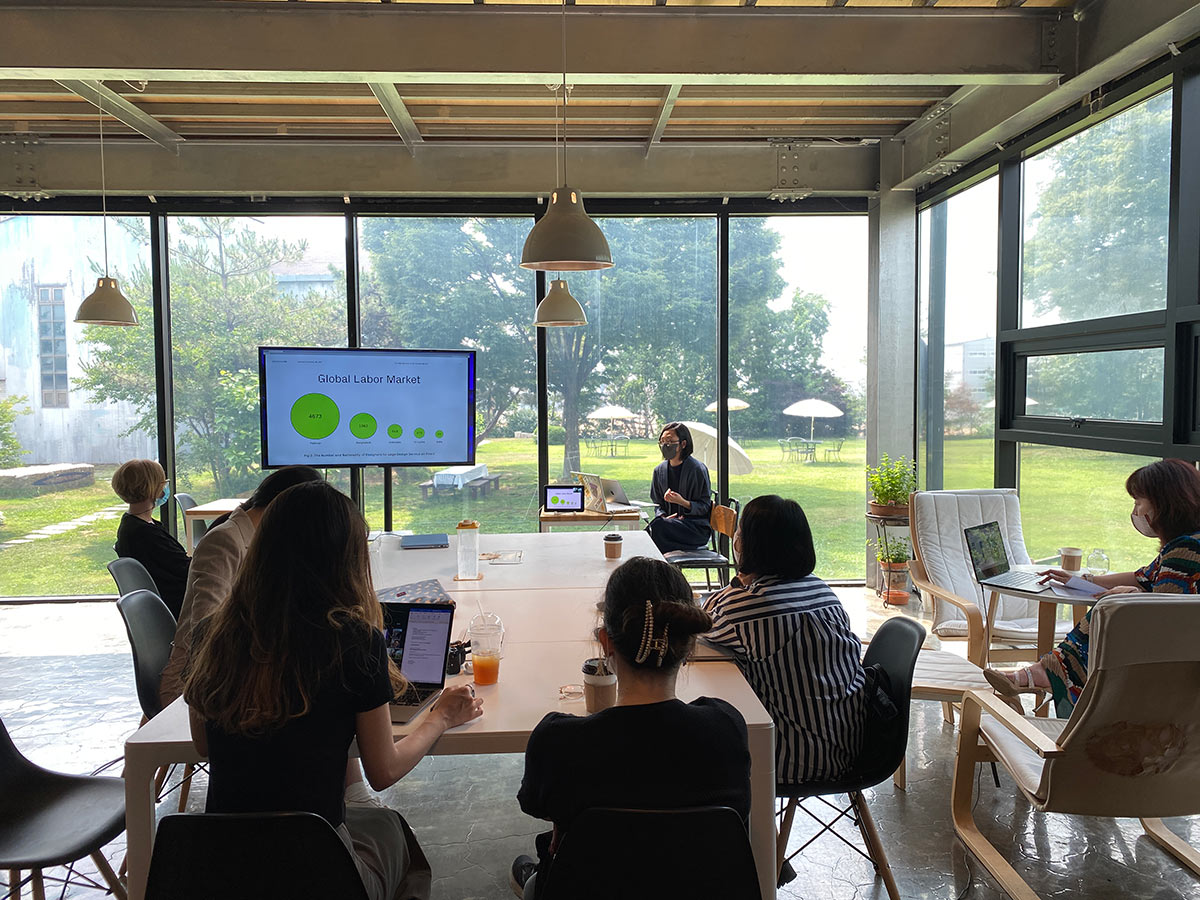
Tour & Workshop at Yeoncheon, Photographed by 최윤영
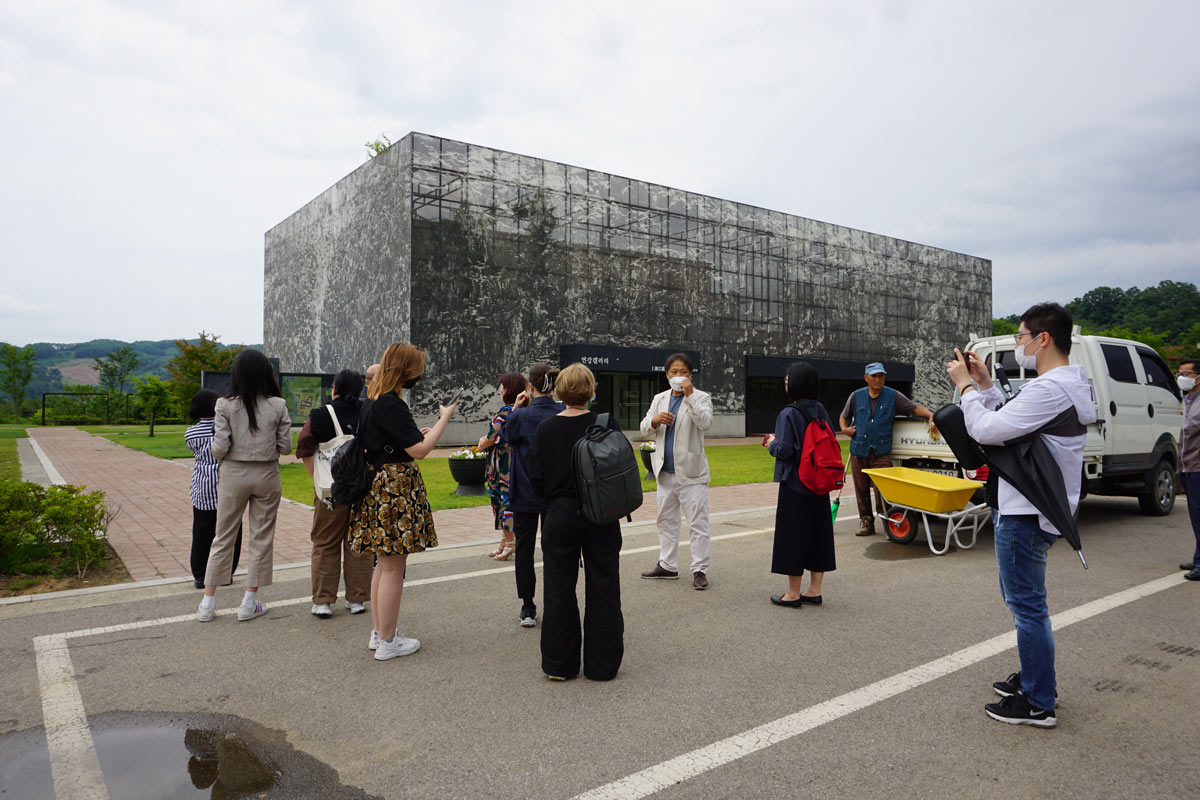
Tour & Workshop at Yeoncheon, Photographed by 김유상 Yoosang Kim
뉴 미디어 아트, ‘틈’ 속의 메시지
: 틈은 시간과 시간 ‘사이’를, 공간과 공간 ‘사이’를 의미한다
최윤영
바야흐로 디지털 시대다. 2020년 발병한 코로나19는 전 세계에 코로나 펜대믹을 불러왔고 이는 정보통신의 발달과 맞물려 디지털 전환의 가속화를 불러왔다. 수많은 가게가 점원 대신 키오스크를 배치했으며 사람들은 외식 대신 배달을 택했다. 친구와의 대화, 다양한 비즈니스 미팅도 카페에서 메신저로 자리를 옮겨오며 디지털 시대는 비대면 시대의 동의어(同義語)가 됐다. 오프라인과 온라인, 아날로그와 디지털, 대면과 비대면은 2022년을 살아가는 현대인을 지탱하는 일종의 ‘구조물’이다.
지난 2022년 6월 11부터 13일까지 CICA 미술관에서 열린 제6회 2022 CICA 뉴 미디어 아트 국제 콘퍼런스(이하 NMAC)에는 바바라 아우스트베게문드(Barbara Aust-Wegemund), 아천 황(Ai-Chun Huang), 로니 카르피올(Ronnie Karfiol), 조신아, 이영미, 박세연 등의 작가들과 지아레이 장(Jia-Rey Chang), 정도이, 키아라 콤스톡(Keirah Comstock), 스태퍼드 스미스(Stafford Smith), 카탈린 소리누(Catalin Soreanu), 라비니아 저맨(Lavinia German), 세실리아 서(Cecilia Suhr) 등의 연구자들이 참여했다. 전 세계에서 활동하고 있는 14명의 작가와 연구자들은 이 ‘구조물’을 ‘뉴 미디어 아트’라는 자신들의 언어로 재해석했다.
‘뉴 미디어 아트’는 ‘뉴 미디어’를 도구로 사용하는 예술을 통칭한다. TV, 카메라, 컴퓨터, 소셜미디어 등 다양한 도구를 활용하는 뉴 미디어 아트는 존재 자체가 기술과 예술의 융합이자 물질과 상상의 혼재이다. 가장 눈에 띄는 특징은 관객과의 거리다. 전통적인 감상은 작가의 창작물을 관객이 감상하는 것으로 구성되지만 뉴 미디어 아트는 창작과 감상의 경계를 무너트리는 방식을 취한다.
뉴질랜드의 대표적인 뉴 미디어 아티스트 단 로세하르데는 사람들의 움직임을 인식하는 스마트 센서를 통해 여러 빛을 내는 디지털 조형물을 설치했으며, 모리스 베나윤은 VR 헤드셋을 활용해 가상의 디지털 공간을 제작했다. 단 로세하르데의 작품은 미술관이라는 공간을 탈피하며 행인을 작품의 일부로 삼고, 모리스 베나윤의 작품은 VR을 통해 전쟁의 참상을 겪은 관객은 또 다른 ‘현실’을 조망하게 된다. 이처럼 뉴 미디어 아트는 관객과 작품 사이의 ‘틈’을 좁힌다.
미국과 한국에 베이스를 두고 있는 이영미 작가는 <Movement and Light> 세션을 통해 ‘Fries Flow(감튀흐름)’을 선보였다. 이영미 작가의 ‘Fries Flow(감튀흐름)’은 우리가 흔히 접하고 먹는 패스트푸드 음식점의 감자튀김을 오브제로 활용하고 있다. 이영미 작가는 감자튀김을 오브제로 삼은 이유에 대해 “사람들은 자신의 시간을 아끼기 위해서 감자튀김을 구매한다”고 설명했다. 누군가의 시간을 아끼기 위해 탄생한 감자튀김은 ‘Fries Flow(감튀흐름)’을 통해 구부려지고, 종이에 스티커처럼 붙여지기도 하면서 낯선 얼굴로 관객을 만난다. 시간을 아끼기 위해 감자튀김을 구입하고 빠르게 씹어먹는 것처럼, 현존하는 많은 이미지들이 획일화되어 소비되며 소화되지 못하게 된다. 감자튀김을 구매하고 먹는 것은 개인의 시간에 속하지만 먹히는 감자튀김의 존재는 개인의 시간에서 유리되는 것이다. 관객은 감자튀김이라는 일상적인 매개와 ‘틈’을 통해 시간의 존재를 바라볼 수 있게 된다.
사진을 시작으로 순수예술, 컴퓨터아트로 활동 영역을 넓힌 박세연 작가는 <Thresholds(문턱)> 세션을 통해 공간의 개념을 확장시킨다. 박세연 작가는 “정관사 the를 붙이면 사물의 시작, 발단, 출발점이라는 표현으로도 쓰인다. 하지만 이와 동시에 이 단어는 무언가의 끝, 말단, 경계지, 한도, 한계점 혹은 범위로도 해석이 된다. 과정을 관찰하고 질문을 던지는 작가인 나에게 이처럼 잘 어울리는 프로젝트 제목도 없다는 생각이 든다”고 설명했다.
박세연 작가의 신작 ‘hitHim’과 ‘Dot’은 인터렉티브 미디어 작품으로 관객들의 참여를 통해 완성된다. 현실을 관찰하며 작품을 탄생시키는 작가는 스스로를 외부의 시선이라고 평가하지만, 작품을 바라보는 관객들은 작가를 내부의 사람이라 여기게 된다. 하지만 관객이 작품에 참여하며 작품을 통해 나뉜 내부와 외부의 경계는 사라진다. 관객은 ‘문턱’ 앞에 서서 자신이 서 있는 시공간에 대해 다시 사유하게 된다.
다양한 ‘빛’을 미디어 아트로 풀어냈던 제임스 터렐은 “내 작품에는 물체도 이미지도 초점도 없다. 당신이 보는 것은 무엇인가?”라는 물음을 던진 적이 있다. 제임스 터렐의 <레이마르, 파랑>은 전시실에 설치된 푸른빛을 관객들이 바라볼 수 있도록 고안되어 있다. 제임스 터렐의 말에 의하면 관객들은 푸른빛을 보고 있지만 물체, 이미지, 초점을 보는 것이 아니다. 관객은 빛과 자신의 ‘틈’ 사이로 자신을 바라본다.
이처럼 모든 것은 ‘틈’에서 비롯된다. 어릴 때 가지고 놀던 인형을 훌쩍 커버린 어느 날, 침대 밑에서 발견하는 것처럼 우리는 잊고 잃고 있던 것들을 ‘틈’을 통해 발견한다. 작가는 ‘틈’을 벌리고 연구자는 ‘틈’의 의미를 만들며 각자의 언어로 관객에게 무한히 말을 건다. 지금 이 순간에도 뉴 미디어 아트는 어느 ‘틈’에 웅크리고 앉아, 우리의 발견을 기다리고 있을 것이다. 2022년의 예술은 그렇게 실존한다.

CICA NMAC 2022 Solo Shows, Photographed by 김유상 Yoosang Kim
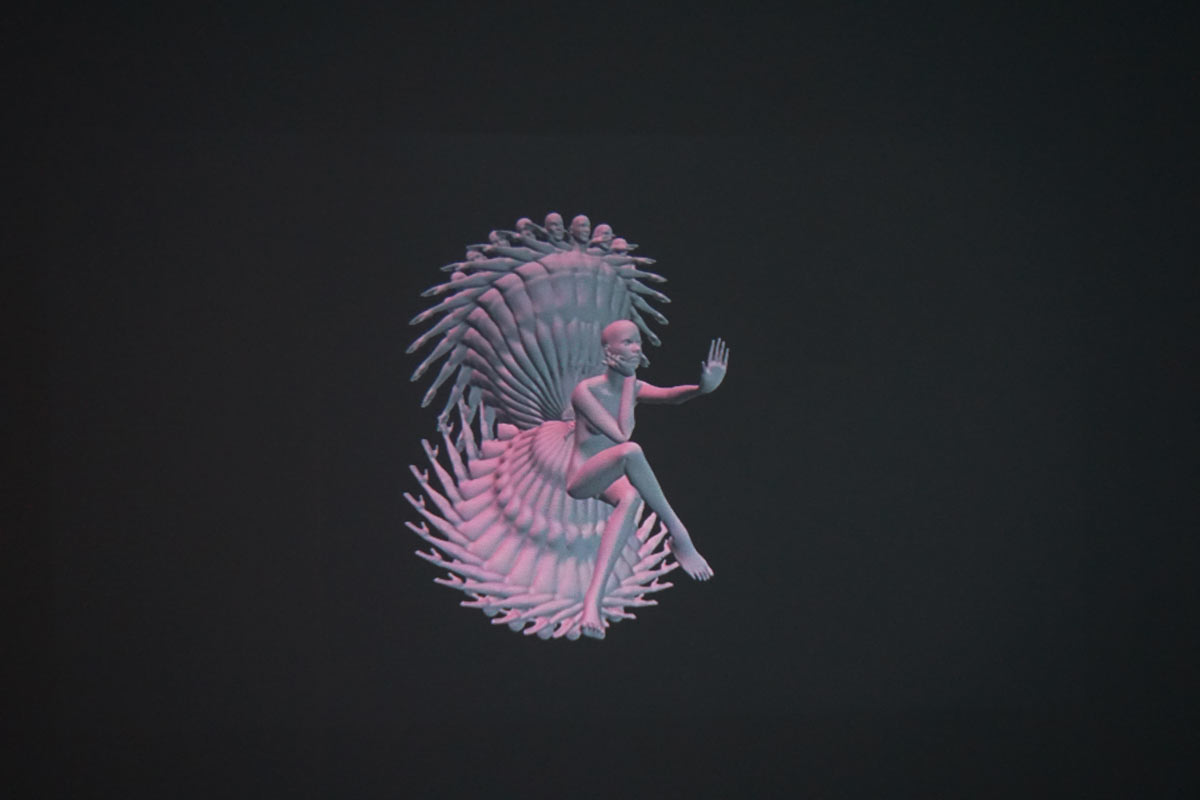
CICA NMAC 2022 Solo Shows, Photographed by 김유상 Yoosang Kim

CICA NMAC 2022 Solo Shows, Photographed by 김유상 Yoosang Kim
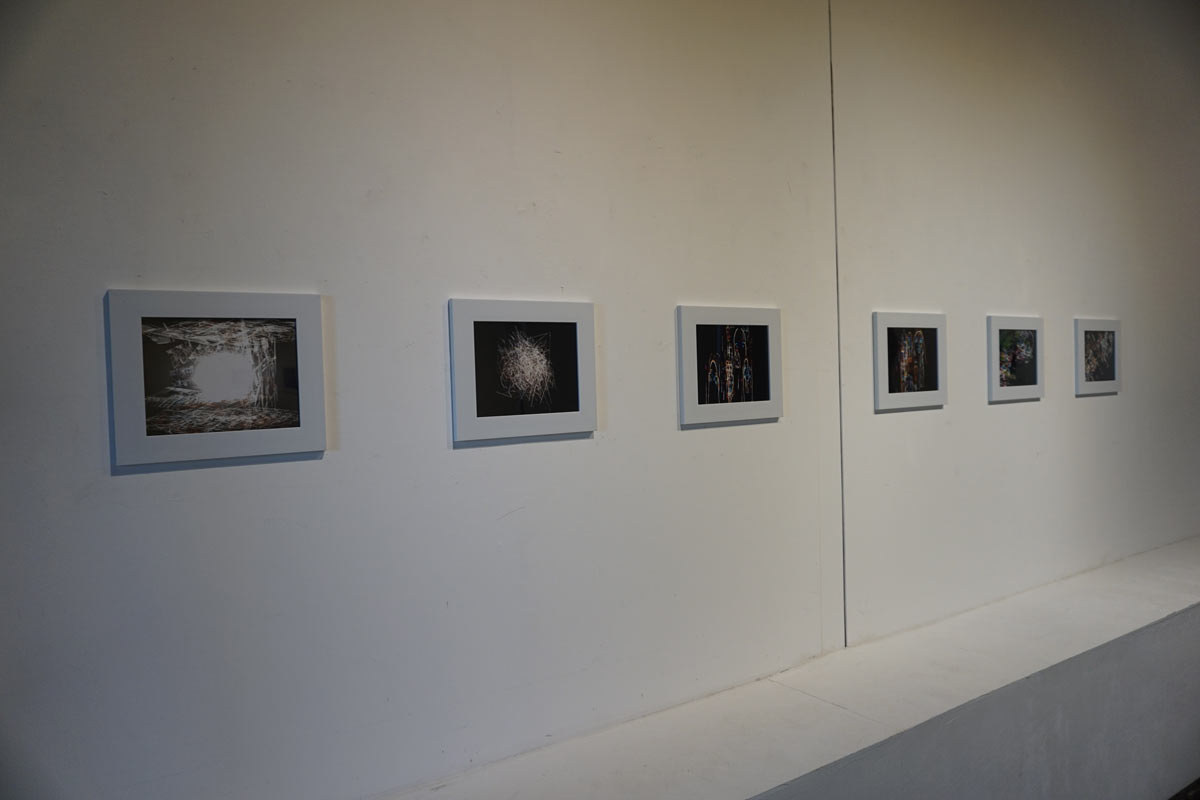
CICA NMAC 2022 Solo Shows, Photographed by 김유상 Yoosang Kim
